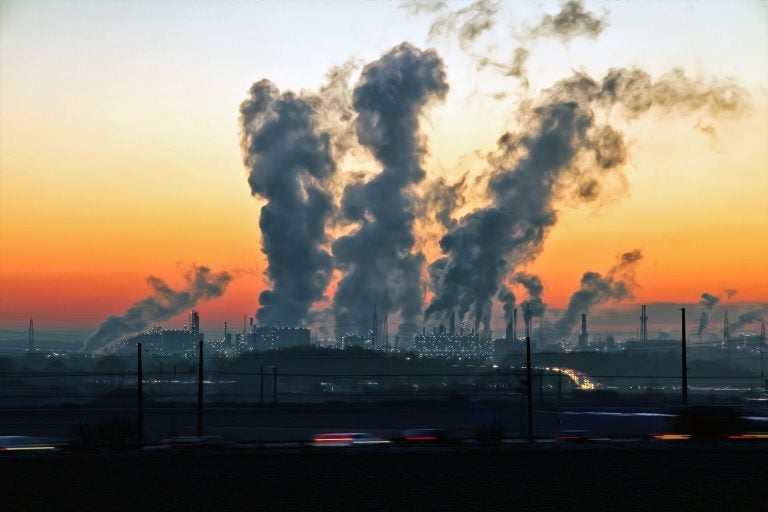EPA told to dial back upwind pollution to clear air in downwind states like N.J.
Officials have long argued unclean air from neighboring states plays significant role in New Jersey’s struggle to reduce smog.

New Jersey has never achieved the federal health standard for ground-level ozone or smog. (Creative Commons)
This article originally appeared on NJ Spotlight.
—
A federal appeals court has struck down an Environmental Protection Agency rule that would have allowed upwind states to delay curbing emissions that foul air quality in downwind states like New Jersey.
The decision by the D.C. Circuit Court of Appeals is significant for New Jersey, a state that has never achieved the federal health standard for ground-level ozone or smog. That’s because officials here have long argued one-third of smog-forming pollution is coming from coal-fired power plants in Illinois, Indiana, Kentucky, Michigan, Ohio and West Virginia.
The federal agency had finalized the rule at the end of 2018 that eased requirements to clamp down on pollutants contributing to smog, leading New Jersey, five other states and New York to challenge the decision. The case was joined by Earthjustice, representing several environmental groups, and others.
“We’re thrilled to see yet another win in our fight to prevent the Trump administration from dismantling environmental protections,’’ said New Jersey Attorney General Gurbir Grewal. “Although New Jersey has done its part to protect our residents and our children from ozone pollution, this dangerous pollution is still coming from other states — and the federal government has refused to do anything about it.’’
Plugging the ozone pipeline
The decision will require EPA to place tighter limits on industrial and power-plant sources of air pollution. Currently, 49 counties with more than 36 million people in the Eastern U.S. and Texas suffer from ozone levels that exceed federal air-quality standards.
Ozone exposure at this level and below can result in chronic respiratory diseases like asthma and scarring of the lungs, as well as premature death, and is particularly harmful to children. The areas of the country that suffer from unhealthy air due to cross-state pollution are disproportionately home to communities of color.
“It is an important victory because it shows the Trump administration cannot arrogantly change environmental standards that affect our health,’’ said Jeff Tittel, director of the New Jersey Sierra Club, whose national organization was a party to the lawsuit. “This is a victory for clean air and our lungs.’’
“This is another big win for public health and the environment,’’ said Earthjustice attorney Neil Gormley, the lead lawyer on the case. “Now it’s past time for EPA to stop stalling and do its job.’’
Simmering ozone soup
Ozone is formed when emissions from vehicles, power plants and industrial sources cook together on hot summer days. So far this year, New Jersey has experienced 12 days when the national ambient air quality standard for ozone was exceeded, although on a handful of these days, violations occurred in several locations around the state, according to the Department of Environmental Protection’s web page.
New Jersey typically has more-stringent air pollution laws than neighboring states, a criticism frequently leveled by business lobbyists who say an uneven playing field makes it more difficult to compete with rivals in other states.
Since Gov. Phil Murphy took office, New Jersey has been very aggressive in filing lawsuits challenging the rollback of assorted environmental rules. It contested changes in the federal endangered species law just last week.
Last year, New Jersey joined other states in challenging the repeal of a law limiting the production of super-polluting trucks, a decision reversed by the EPA after the lawsuit was filed.
WHYY is your source for fact-based, in-depth journalism and information. As a nonprofit organization, we rely on financial support from readers like you. Please give today.




